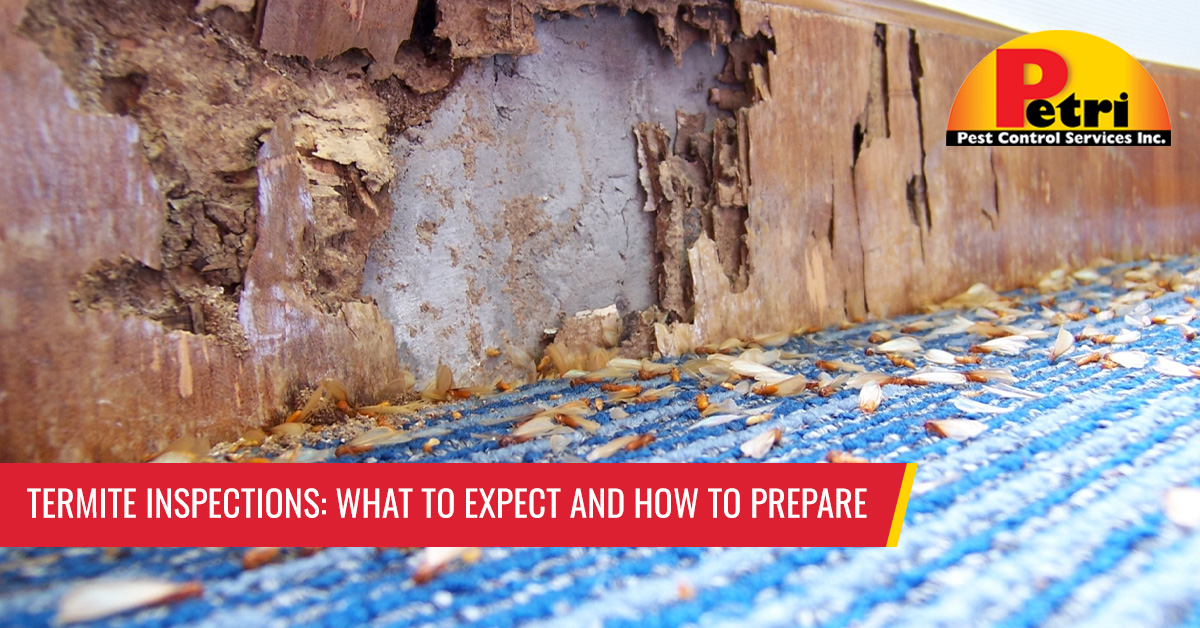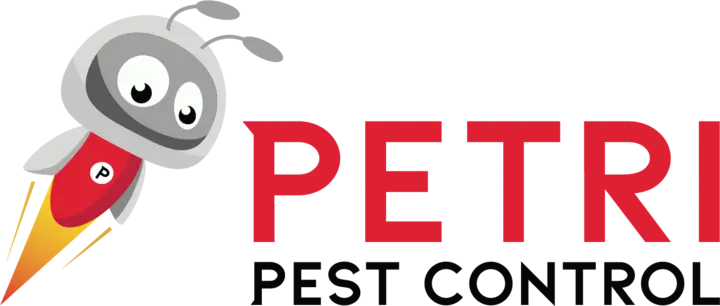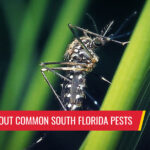
Termite inspections are necessary for most real estate transactions but are also critical if you suspect your home might be infested with termites. In this article, we detail what a termite inspection is, what a termite inspection commonly consists of, and what our inspectors are looking for to confirm if your home has termites.
In South Florida, homeowners are wise to protect their homes from termites, by taking steps to deter termites from getting in their homes for several reasons, including:
- Termites can be infesting the wood in your home for a while before you realize they are there.
- Termite damage is not covered by homeowner’s insurance, as insurance companies consider termite damage avoidable.
- Americans spend an estimated five billion dollars per year on termite control and termite damage repair.
- Termites damage around 600,000 homes in the US annually.
- According to the USDA, US residents spend at least one billion dollars each year to control Formosan subterranean termites
What is a termite inspection?
A termite inspection is performed by a licensed termite inspector from a trusted professional pest control company, such as Petri Pest Control Services. Different from a standard home inspection, a termite inspection takes into account the entire physical structure of your home, from your roof to your foundation. Most termite inspections last about an hour depending on the size of your house and the number of other buildings on your property, such as storage sheds, as well as other wooden features, such as decks, gazebos, and fences.
What preparations are necessary prior to a termite inspection?
Your termite specialist may or may not require preparation before your termite inspection. In general, it’s a good idea to give your termite inspector easy access to your attic, garage, crawl space, and the space under your sink. Remove items under your sink that are blocking your plumbing and move items from your attic that prevent your termite inspector’s access to your roof. If you have a crawl space, remove items that limit access to your crawl space. Also, remove items blocking expansion joints in your garage. Move items in your garage away from the walls. Trim branches away from the sides of your house and remove furniture and storage boxes away from the walls on your deck or patio.
What are termite inspectors looking for?
When your termite inspector arrives, he or she will probe and inspect your home for signs of termite activity. Your inspector will check your baseboards, walls, and floors for tell-tale signs of termite activity that include:
- Blistered or warped surfaces. Such as doors, door frames, ceilings, and floors that look slightly water damaged or buckled. Drywood termites carve out living spaces, called galleries in the wood they infest, compromising the structural integrity of the wood, so that it appears warped or looks like blistered paint.
- Hollow sounding surfaces that you can easily poke a screwdriver through. Termites eat the wood in doors, frames, fascia, eaves, and soffits leaving only a hollow frame that you can poke a hole through with a screwdriver, with little effort.
- Kickout holes and piles of frass. Termite droppings, known as “frass” that look like a pile of sawdust. Drywood termites live inside the wood they infest, and they have adapted to using only the water in the wood they ingest to survive. Their digestive system squeezes all of the moisture out of the wood they ingest, which results in drywood termites excreting six-sided barrel-shaped pellets, called frass. Drywood termites will drill holes in the wood they’re infesting to remove the frass from their galleries.
- Exit holes. When reproductive dry wood termites swarm in search of mates with which to start their colonies, exit holes are drilled to allow the alates to swarm in late spring and summer. These holes are plugged with a paste made of frass after the reproductives exit galleries.
- Discarded wings. After reproductive termites mate, they no longer need their wings, and their wings drop off, as the new couples find cracks or crevices to squeeze into to form their new colonies. These discarded wings are on windowsills, foundation walls, or in spider webs. Discarded wings found outside your home can mean that termites are likely active in your yard, but wings found inside your home indicate an active termite infestation.
- Mud tubes. Often seen behind shrubs, underneath porches, behind stairs, behind washing machines, in the backs of closets, and in many other hidden places, mud tubes can indicate subterranean termite activity. Subterranean termites build nests in the ground near your home and build tunnels made of dirt, feces, and saliva that worker termites use to transport food back to the hungry mouths located in the ground near your home. Mud tubes can be both thin like a pencil or bulky like a large icicle.
Your termite inspector will look for holes and cracks in your foundation, and water pooling around your foundation, paying close attention to any ground-to-wood contact and mulch that meets the foundation of your home. Under your sink, in your laundry room, and your bathroom a termite inspector will be looking for evidence of termite activity where openings were made for plumbing pipes. A termite inspector will look for signs of water leaks in these areas, as well. Outdoors, your termite inspector will want to check trees, tree stumps, storage sheds, decks, patios, and wooden fencing for signs of termite activity.
After your termite inspection
When your technician has completed your termite inspection, he or she will explain the findings to you, discuss treatment options to eliminate these destructive pests, and give you a quote for treatment, if current termite activity is present.
After eliminating an active infestation, pest control professionals, such as Petri Pest Control Services can treat your property on the perimeter, to prevent subterranean termites from entering your home. Our preventative termite programs include inspecting your home annually for dry wood termite activity.
Additionally, homeowners in South Florida can take steps to keep termites out of their homes. Some of these measures include:
- Keeping your gutters clean.
- Making sure your downspouts drain away from your house.
- Trimming branches away from the sides of your house.
- Correcting or eliminating any water issues near your foundation.
- Keeping wood mulch at least six to twelve inches away from your foundation.
- Decluttering your home and removing cardboard boxes.
- Removing all debris from your yard.
- Stacking firewood at least six feet from your home
As a homeowner, in South Florida, preventing termites should be a major priority! Contact Petri Pest Control Services, Inc. to schedule a FREE termite inspection. Serving Palm Beach and Broward Counties since 1956, Petri Pest Control Services is your trusted, neighborhood, family-owned pest control company!
Termite Inspections: What To Expect And How To Prepare in South Florida
Serving Broward County and Palm Beach County


